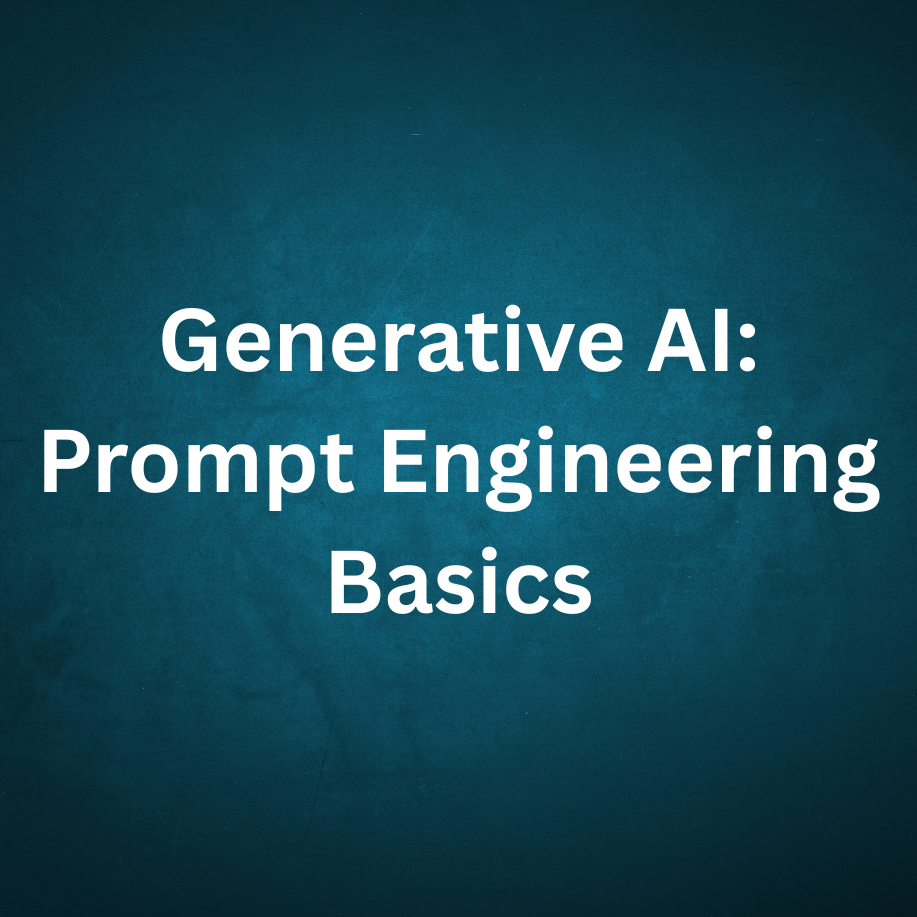Description
🎯 Course Title:
Generative AI: Prompt Engineering Basics
Course Duration:
4 to 6 weeks (can be adapted for workshops or bootcamps)
Target Audience:
Beginners to intermediate learners (non-programmers welcome)
Prerequisites:
-
Basic digital literacy
-
Familiarity with ChatGPT or similar AI tools (optional but helpful)
🗂️ Course Modules Overview
Module 1: Introduction to Generative AI
-
What is Generative AI?
-
Overview of LLMs (Large Language Models)
-
Use cases: text generation, summarization, translation, code generation, image generation
-
Tools overview: ChatGPT, Claude, Gemini, DALL·E, Midjourney, etc.
Hands-On: Try simple prompts in ChatGPT or Claude
Module 2: Understanding Prompt Engineering
-
What is a prompt?
-
Types of prompting:
-
Zero-shot
-
One-shot
-
Few-shot
-
-
Prompt structure and formatting
-
Importance of clarity and instruction
Activity: Craft zero-shot and few-shot prompts for rewriting text
Module 3: Prompt Design Techniques
-
Role prompting (e.g. “Act as a…”)
-
Chain of Thought prompting
-
Instructional prompting (imperative tone, constraints)
-
Controlling tone, style, format
-
Avoiding hallucinations
Lab: Rewrite prompts to improve output quality
Module 4: Image Prompting Basics
-
Introduction to text-to-image tools (DALL·E, Midjourney)
-
Prompt structure for visual generation
-
Styling keywords (e.g. “hyperrealistic”, “minimalist”, “cyberpunk”)
-
Parameters and modifiers (e.g. resolution, aspect ratio)
Hands-On: Generate an image using DALL·E or Midjourney
Module 5: Advanced Prompting Techniques
-
Prompt chaining & context preservation
-
Dynamic prompt injection
-
Prompt templates for automation
-
API-based prompt engineering (e.g. OpenAI API)
Project Idea: Build a prompt-driven mini-app (e.g. blog post generator)
Module 6: Ethics, Safety & Limitations
-
AI bias and fairness
-
Misuse of generative AI (deepfakes, misinformation)
-
Safety filters and guardrails
-
Prompting for trustworthy outputs
Discussion: Review real-world examples of responsible vs irresponsible prompting
🧪 Assessment & Projects
-
Weekly prompt challenges
-
Final Project: Create a prompt toolkit (for writing, design, coding, etc.)
-
Peer reviews and reflection logs





Reviews
There are no reviews yet.